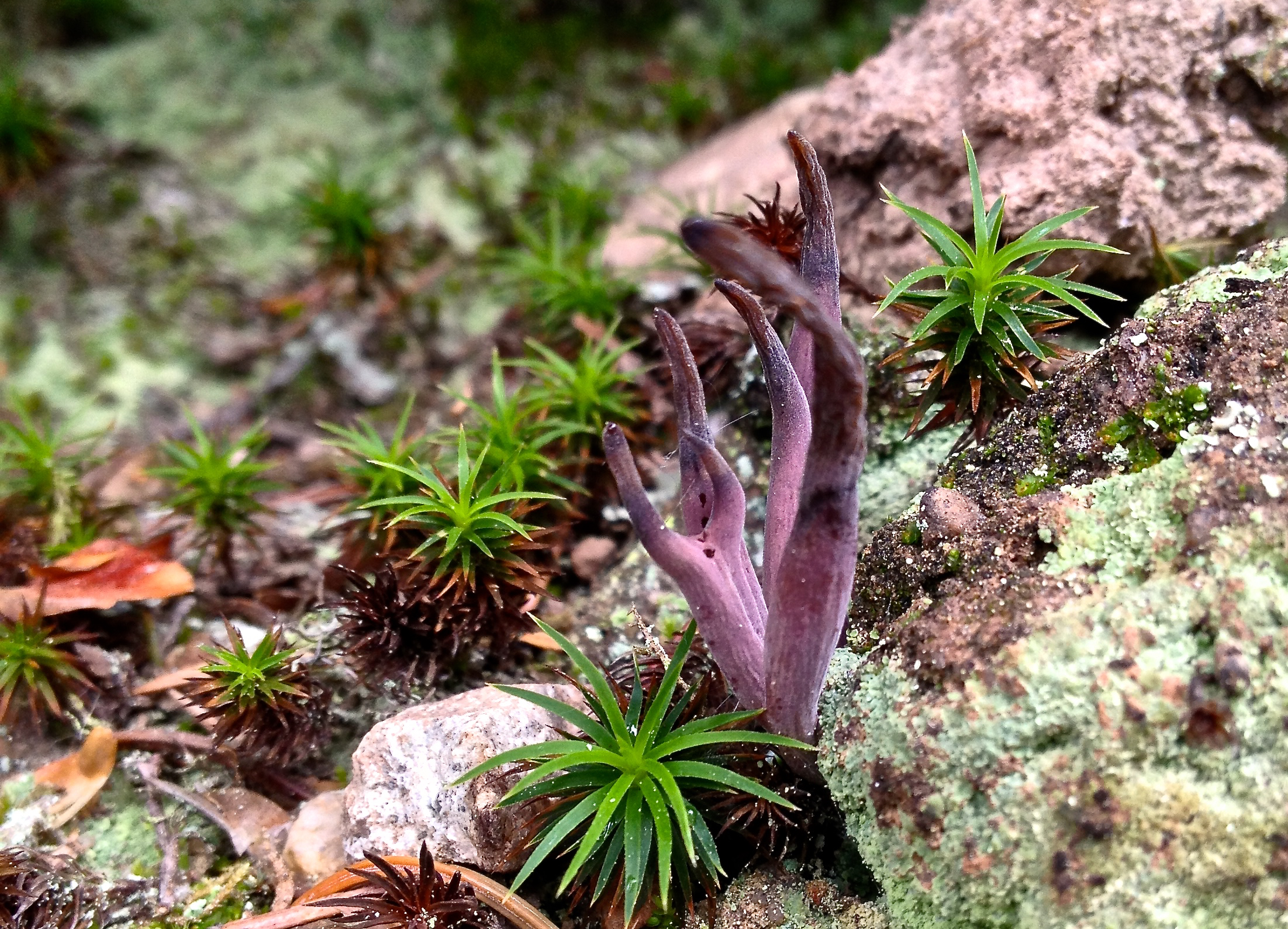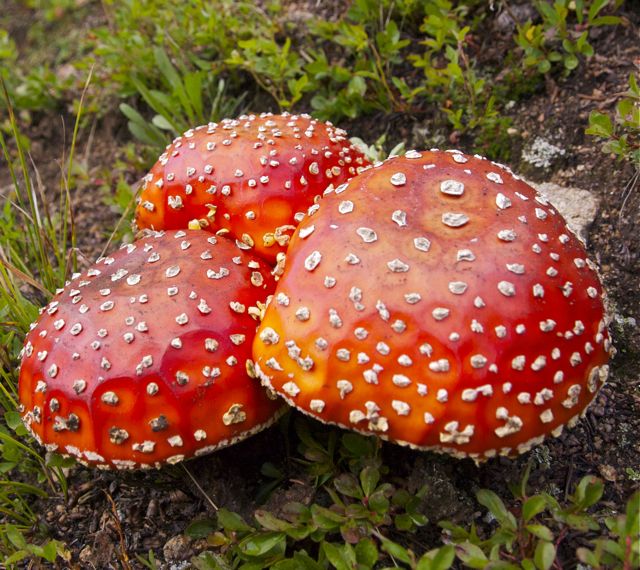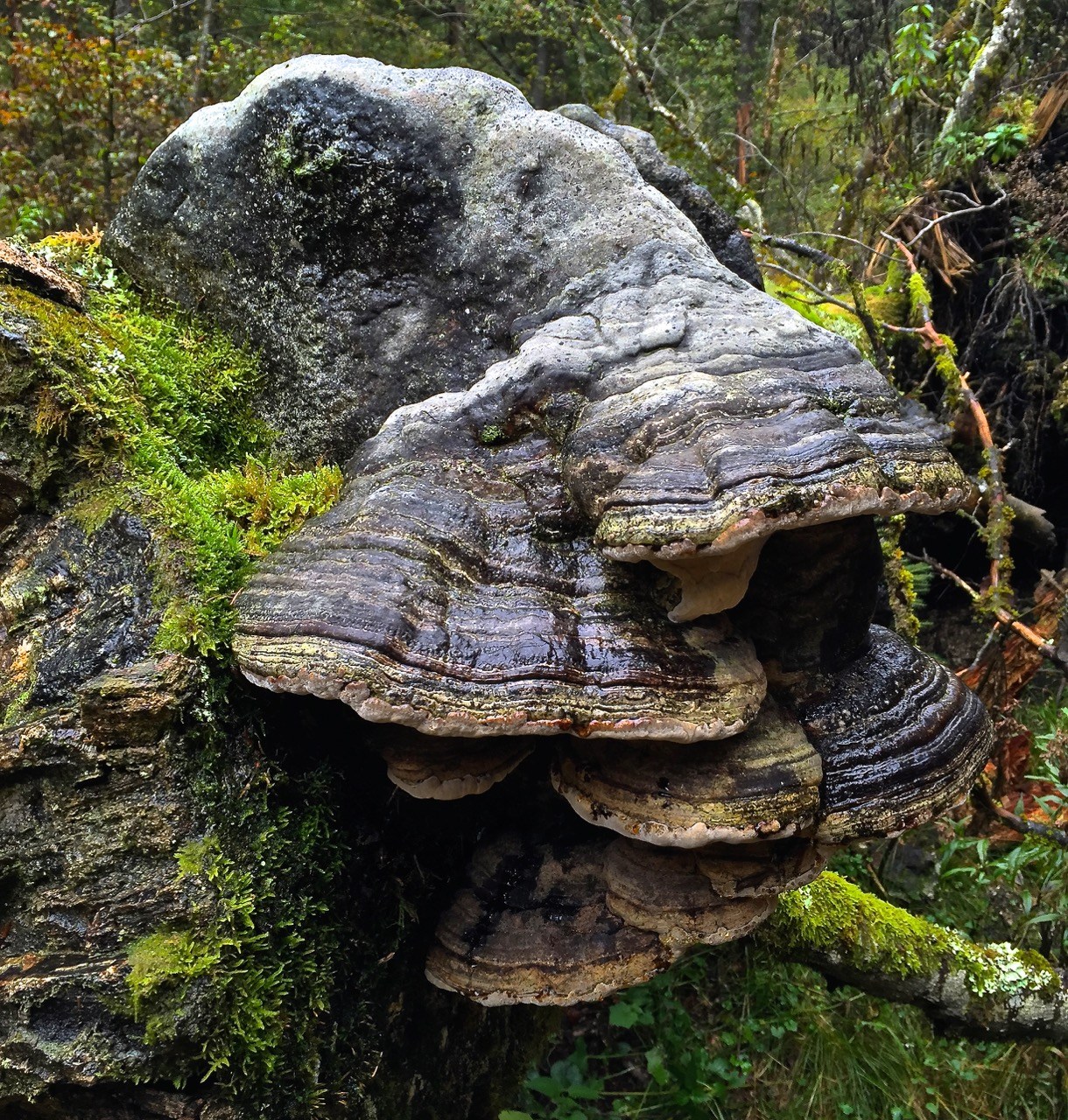
(Photo: Bob Berwyn)
August marks the start of mushroom season in many parts of the world, so here are some new facts about forest fungi. And lest you find this story at all frivolous, know this: Those squishy caps with funny names like stinky squid and witch’s hat have helped shaped the global climate for millions of years.
Recent research on the relationship between fungi and forests is shifting the conventional scientific wisdom that climate drives the amount of carbon going into forest soils.
It may be the other way around. In 2014, scientists said fungi process so much carbon that they have a bigger effect on C02 than many other factors, like the amount of plant growth, temperature, and rainfall.
They’ve been helping regulate the global carbon cycle, and, as a result, the climate, for millions of years. During ancient ice age cycles, fungi slowed the removal of C02 from the air, which helped shift the climate back to a warmer phase, another study found.
It’s hard to imagine mushrooms having such a large effect on greenhouse gas levels, but the colorful buttons you see above ground are just a tiny fraction of fungal organisms. In their secret life underground, they send out millions of miles of fine, fuzzy root-like runners, called mycelia, snaking beneath the surface of every forest.

(Photo: Bob Berwyn)
Sometimes they form cottony mats across many square miles; one of these areas weighs around 800,000 pounds, making it one of Earth’s largest single living organisms. And they are among the most efficient carbon-processing organisms—without them, we’d be up to our eyeballs in dead branches and trees.
The End of Coal
Fungi already existed 300 million years ago, when all the world’s land masses were smashed together into a massive super-continent called Pangea. Giant trees and ferns grew rapidly across millions of square miles; as they died, the sheer weight of all that plant matter compressed itself so prolifically into lignite coal that we call it the Carboniferous Period.
The coal is still being strip-mined today, and, since the mid-1800s, we’ve burned so much of it that we’re melting the planet’s ice caps and glaciers and acidifying the oceans.
But the evolution of lignin-processing white-rot fungi about 300 million years ago put an end to the formation of new coal. So even if humanity can’t bring itself to stop using the fossil fuel, it will eventually be gone.
Today we’re worried about skyrocketing CO2 levels, and scientists are looking back at past climate cycles to get clues about how our planet will change because of greenhouse gas pollution from fossil fuels.
Hydnellum Peckii, sometimes called devil’s tooth mushroom, grows in North America, Europe, and was recently discovered in Iran and Korea. It’s one of the many species that grows in a beneficial relationship with coniferous trees, and another example of how many mushroom species are global residents, native to multiple continents. (Photo: Bob Berwyn)
A giant Western puffball (Calvatia booniana) a little bigger than a softball grows in a mountain meadow near Frisco, Colorado. The fast-growing fungus can go from golfball to football size in just a few days. The pushed-up soil at the base of the mushroom attests to its life force. (Photo: Bob Berwyn)
A wild Agaricus mushroom, closely related to the store-bought white button variety, scientifically called Agaricus bisporus. During a recent national mushroom conference in Colorado, biologists working for commercial mushroom growers combed the forests for new specimens that might have some desirable new genetic qualities for cultivators. (Photo: Bob Berwyn)
Boletus edulis, a favored edible also known as ceps or porcini, grow in association with conifers in much of the Rocky Mountain West. (Photo: Bob Berwyn)
Thousands of species of fungi help break down organic forest material and lock the carbon into the soil. (Photo: Bob Berwyn)
Numerous species in the Panaeolus genus are all decomposers of dead wood. Without these, and many more like them, we’d be up to our eyeballs and beyond in dead wood. (Photo: Bob Berwyn)
Yellow coral mushrooms, of the Ramaria genus, form another widespread family of fungi found worldwide. In Cyprus, these fungi are thought to be critical to the survival of native and rare golden oak trees. (Photo: Bob Berwyn)
Puffball mushrooms about the size of golfballs are common in forests throughout the world. They are part of the fungal web that connects forests, earth, and atmosphere in a dynamic cycle. (Photo: Bob Berwyn)
In one study, scientists found a link between fungi, C02 levels, and global temperatures going back 24 million years. Many times in that span, C02 dropped below the 280 parts per million concentration that prevailed through the human era (we’re currently at 407 ppm thanks to fossil fuels).
But it never dropped below a range of 180-200 ppm, and University of Sheffield biologist Joe Quirk says fungi kept the climate cycle in check by determining how much carbon forests can lock into the soil.
The Good—and Bad—Side of Fungi
Fungi can regulate carbon because they are connected with the roots of plants at the molecular level, enabling a flow of nutrients in both directions. The fungi get carbohydrates from the tree and put the carbon in the ground; the tree gets mineral nutrients from the soil broken down by the fungi.
Of course, there are also pathological fungi that kill trees, and they also are part of the carbon cycle and climate change equation. And in the current rapid global warming era, fungi are part of climate feedback loop that probably won’t end well.
Tree-killing bugs have thrived during recent heatwaves and droughts, and when the forests perish, so do their fungal partners.
University of Alberta ecologist Justine Karst says that, in areas where the fungi died out, the forests are having a hard time regrowing. She and other scientists say that using fungi as allies may be one of the keys to help pine forests become more resilient to global warming.

(Photo: Bob Berwyn)
“We are trying to get a handle on how these fungal communities change under these various scenarios,” says University of Alberta forest ecologist Jonathan Cale. “We want to promote healthy and rapid forest development using organisms already present in the area, so that we don’t need to use chemicals or invasive, mechanical means.”
Those forests, in turn, are critical to trying to limit heat-trapping carbon dioxide in the atmosphere. If global warming kills forests, it means more CO2, and more warming, which leads to more tree-killing insect outbreaks, droughts, and wildfires.
In a similar project in Montana, United States Forest Service scientists are trying to use fungi to rescue another tree species—the whitebark pine, which is on the International Union for the Conservation of Nature’s red list, and was declared a candidate species for the U.S. Endangered Species List. In labs and tree nurseries, scientists are finding that inoculating the soil of seedlings with spores from the symbiotic partners speeds growth and could help save whitebark pines.
Much of this science is in an emergent stage, and many land and forest managers aren’t even really aware that shifts in fungal communities could have a huge effect on many different plants. In the U.S., national forests in the northwestern part of the country have grappled with the question and are trying to establish accurate inventories, which are needed to measure future changes.
In other regions, not much of that work has been done yet, which could hamper forest management efforts but also presents opportunities for citizen scientists. It’s actually one of the scientific fields where citizens already play a big role, fanning out in mushroom forays to count and identify the hundreds of species that can grow in a geographic area during summer and fall season. The best one-stop clearinghouse for information is the North American Mycological Association.












